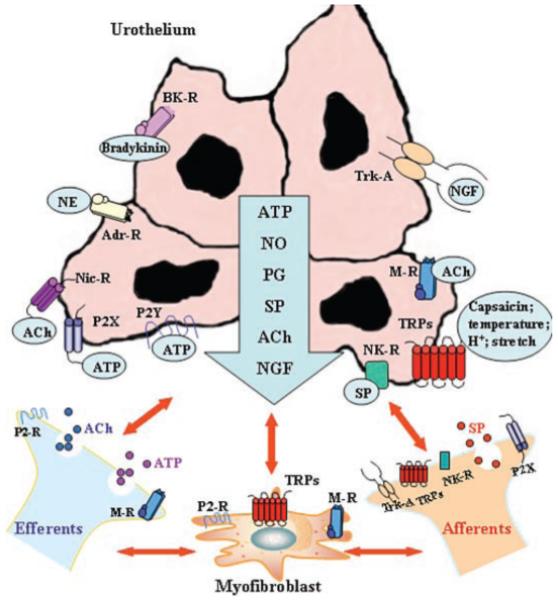Fig. 1.

Hypothetical model depicting possible interactions between bladder afferent and efferent nerves, urothelial cells, smooth muscle, and myofibroblasts. Stimulation of urothelial receptors and channels can release mediators that target bladder nerves and other cell types; urothelial cells can also be targets for neurotransmitters released from nerves or other cell types. Urothelial cells can be activated by either autocrine (i.e., autoregulation) or paracrine (release from nearby nerves or other cells) mechanisms. Abbreviations: ACh, acetylcholine; AdR, adrenergic receptor; BR, bradykinin receptor; H+, proton; MR, muscarinic receptor; NE, norepinephrine; NGF, nerve growth factor; NR, neurokinin receptor; NicR, nicotinic receptor; NO, nitric oxide; P2R, purinergic 2 receptor unidentified subtype; P2X and P2Y, purinergic receptors; PG, prostaglandin; SP, substance P; Trk-A, receptor tyrosine kinase A, high affinity receptor for nerve growth factor; TRPs, transient potential channels.
